HOTEL BLAŽA ĐAKOVO
About us
Location and directions
Hotel services
Celebrations and festivities
Lectures and seminars
Restaurant and catering
Accommodation and reservation
Touristic offer
Contact
TOURISTIC OFFER
Detailed offer of hotel Blaža in Đakovo also contains organization of excursions and visits to the notable places of the city of Đakovo and also of the region, which has extremely rich tradition. With your prior notification we will organize visit to the places and things that interest you. Apart from this, it is possible that you choose among one of our offered possibilities. Among notable places and things in the city and the region we recommend you the following: |
|
Cathedral basilica of St. Peter in Đakovo Built from 1866 to 1882, cathedral basilica of St. Peter in Đakovo is most important building in wider region. It was built by one of the historically most important people of Croatian religious and political life, bishop Josip Juraj Strossmayer. Cathedral today represents headquarters to Archdiocese of Đakovo and Osijek. It was built as a combination of neo-romanic and neo-gothic style and as such is a unique in the area. In agreement with archdiocese, visit to the cathedral may include tour of the crypt, which contains tombs of the bishops of Đakovo. There is also a very interesting tombstone on the tomb of bishop Strossmayer, made in 1913. |
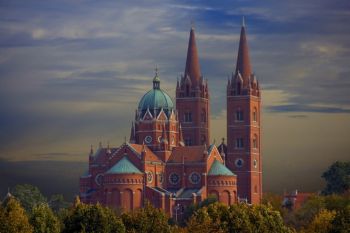 |
State horse farm of Lippizaner and stables at Ivandvor Tradition of breeding horses begins in Đakovo, according to the documents, in 1506 when contemporary bishop had stable of 90 horses of Arabian origin. Since 1806, horses of Lippizaner origin are also raised in Đakovo and exclusive breeding of Lippizaner horses begun during time of bishop Strossmayer. Today, the state horse farm is oldest breeding and selection institution in Croatia, which preserves extremely valuable genetic material of Lippizaner horses. |
 |
The Đakovo Embroidery International folklore festival, the Đakovo Embroidery is held once every year. Many of cultural and gastronomic events are held some weeks before the actual start, but main programme of the Đakovo Embroidery takes place in the period of three days. It starts on Friday evening, always on the first weekend in July on the main city square in front of the cathedral basilica, where opening ceremony is being held. Saturday is reserved for sightseeing of the city and visit to the performances that are being held in the park. Sunday morning begins with a big procession of all participant folklore groups and after that a full day programme begins on the stage in the park. Parallel with it, there are a lot of performances in the city centre. Number of participants of the Đakovo Embroidery is growing from year to year. Beside Croatian participants, there are a lot of them from wider region of central and southeast Europe but also from the distant continents as well. On Saturday and Sunday you can visit equestrian performances on the state horse farm in Đakovo. Festival ends on Sunday evening with a closing ceremony on the stage in the park. |
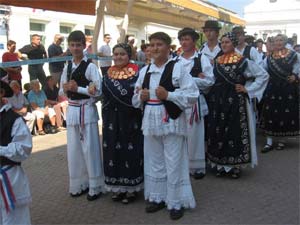 |
Tvrđa in Osijek Historical centre of the city of Osijek is baroque monument of high relevance. Today’s form started to develop in 1712. Central part of Tvrđa is occupies the big square. Notable places include remaining parts of the fortress of Filibey, which is only remaining monument from Turkish times. You can also see the church of St. Michael, which is built on the place of former mosque of Kasim pasha, once the most beautiful mosque in Osijek. Tvrđa ends (or begins) at Water Gates, which is last remaining, of prior four) entrances in the Tvrđa. After the gates, path leads to famous promenade of Osijek and right coast of Drava river. |
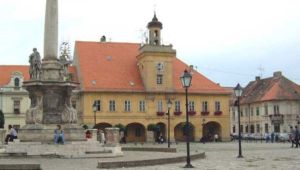 |
Kopački rit At the beginning of Croatian part of Baranya region, north of the city of Osijek, there is a nature park Kopački rit. Total area of the park is 17700 ha, inside which is a special zoological reservation with area of 8000 ha. Unique in wider region, Kopački rit is one of the biggest fluvial-wetland areas in Europe. According to the Ramsar Convention it is protected as internationally significant wetland. Nature park is home of forest and wetland vegetation, molluscs, insects, 44 species of freshwater fish, 11 species of batrachians, and 10 species of reptiles. In Kopački rit, there is also 293 species of birds, which is 80% of total bird population in Croatia and 54 species of mammals, which is more than half of total mammal population in Croatia. |
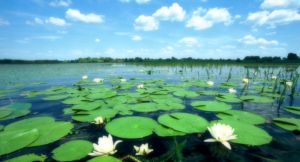 |
Vukovar What once was one of the richest cities in the region, heroic city of war of independence today has a lot of problems. Traces of destruction are still more than visible, but strength of a spirit of local people remains guarantee of recovery and continuation of life. Vukovar is city since oldest times. Neolithic archaeological founding Vučedol and famous ceramic figure of the Dove of Vučedol is good witness to support that. A bit younger, centre of town that is built in baroque ages and castle of Eltz are next two notable things that are worth of seeing. Recent period is characterised by war. The 50 metres high water tower in city part of Mitnica will remain as it is even after full restoration, as a constant reminder of the dark ages. Visit to Vukovar includes the tour of Ovčara and Memorial cemetery of the victims of war of independence. In past and happier times, Vukovar was place of progress and development in science. Winner of Nobel Prize for Chemistry in 1939, Lavoslav Ružička was born in Vukovar. Visit to the house of his birth is also a part of Vukovar tour. |
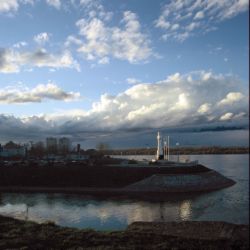 |
Aljmaš On the right coast of Danube river, the village of Aljmaš is most significant sanctuary of Virgin Mary in Archdiocese of Đakovo and Osijek, which is founded in 1704. Church of Virgin Mary is built in 1864. During the Croatian war of independence the church was completely destroyed and on its placed today, you will find a modern building, which is visited by big number of pilgrims every year. |
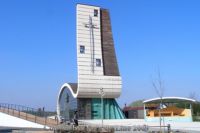 |
Jewish cemetery of holocaust victims in Đakovo Located directly next to the cemetery of the city of Đakovo, Jewish cemetery has 600 graves from the period of World War II. Buried inside them are the victims of concentration camp, which was active in Đakovo during 1941 and 1942. By its form it is unique in all of Europe and represents the cultural monument of high significance. It is only cemetery from the period of World War II where the graves of Jewish victims are marked by name, which makes them known to this day. Synagogue is built on the entrance into the cemetery and whole complex is today unique witness of the holocaust as the biggest suffering of Jewish people ever in history. |
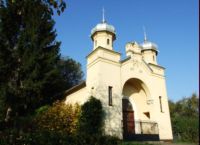 |
Parish church of All Saints in Đakovo Today’s parish church of All Saints in Đakovo is mentioned in Turkish documents from 1565 for the first time. It was build as mosque of Ibrahim pasha. It was renamed as catholic church in 1704 after Turks withdrew from Đakovo. Next step in evolution of the object was in 1762 when it was officially declared to be a parish church. Today is, just because of its Turkish past, only single-area dome-object of sacral character in region of Slavonia. |
 |
Parish church of St. Peter and Paul the Apostles in Osijek Highest church in Osijek was built between 1894 and 1898 on request of bishop Strossmayer. It was built in gothic style and it is placed in the very centre of the city of Osijek, next to the Ante Starčević Square. At the end of 2008, when archdiocese of Đakovo and Osijek was formed, church was awarded title of con cathedral. |
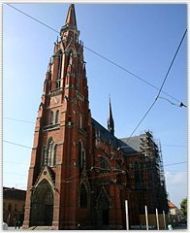 |
Tikveš Castle in the forest and hunting complex of Tikveš is built in 19th century. Buildings surrounding the castle were made until mid 20th century. During the years, the castle was property of Karađorđević dynasty, then later after World War II, it was residence of late president Tito where he received foreign statesmen and lead them hunting. The castle today is completely adjusted for visits of the tourists. |
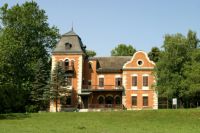 |
Cellars of Ilok Apart from production of wines in the diocese of Đakovo, region around city of Ilok is most significant part of eastern Croatia in context of wine production. First one that seriously started development of wine production in Ilok was duke Odescalchi in 17th century. Under his castle he built a wine cellar, today known as Old cellar. It was built in three levels under ground surface, where wine is kept depending on the temperature, age, sort etc. Quality of wines from Ilok region was never disputed. 11000 bottles from Ilok cellars was delivered for the coronation of British queen Elisabeth II. |
 |
Ethno village Karanac In the old documents, Karanac is first time mentioned in 1357 as Karancs and later as Karancs-vár. Today, village is specific for the bigger number of traditional Panonian houses, decorated with ethno elements. As such, Karanac is significant centre of rural tourism in the Croatian part of the region of Baranya. |
 |
Borovik Lake Borovik lake is placed close to city of Đakovo. It was artificially made in 1978 on the well of Vuka river. Circumference of the lake is 7 km and it has average depth of 15 m. With these measurements, lake represents significant water surface in the Đakovo region. It is favourite place for sport fishermen and one of the best spots for catching carps. Biggest carps caught on the lake weighted up to 30 kg. Largemouth basses in the lake can weight more than 2 kg. Beside fishing, forests surrounding the lake are favourite place for picnics, strolling and relaxation in the nature. |
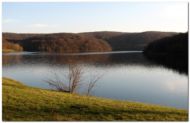 |
Wine routes Whole Slavonia and Baranya region has extremely long tradition in wine production, which is in some places as old as Roman Empire. There are four dominant wine yards in this region. Erdut, Baranya, Đakovo and Našice wine yards. Depending on the choice of customer and number of days of your trip, tour of wine routes may contain villages of Bilje, Suza, Zmajevac and Banska kosa in Baranya; Trnava and Mandićevac in Đakovo region, cellars in Erdut and Feravino in Feričanci. |
 |